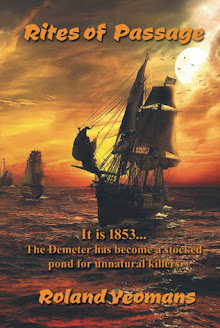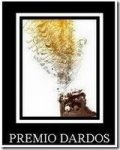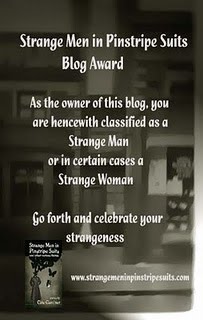
My songs were once of the sunrise:
They shouted it over the bar;
First-footing the dawns, they flourished,
And flamed with the morning star.
My songs are now of the sunset:
Their brows are touched with light,
But their feet are lost in the shadows
And wet with the dews of night.
Most of us know INVICTUS or at least the famous refrain of it.
But do you know its author, William Ernest Hemley?
From the age of 12 Henley suffered from tuberculosis of the bone which resulted in the amputation of his left leg below the knee during either 1865 or 1868–69.
According to Robert Louis Stevenson's letters, the idea for the character of Long John Silver was inspired by his real-life friend Henley.
Stevenson's stepson, Lloyd Osbourne, described Henley as "..a great, glowing, massive-shouldered fellow with a big red beard and a crutch; jovial, astoundingly clever, and with a laugh that rolled like music; he had an unimaginable fire and vitality; he swept one off one's feet".
In a letter to Henley after the publication of Treasure Island Stevenson wrote "I will now make a confession. It was the sight of your maimed strength and masterfulness that begot Long John Silver...the idea of the maimed man, ruling and dreaded by the sound, was entirely taken from you".
His literary acquaintances also resulted in his sickly young daughter, Margaret Henley (born 4 September 1888), being immortalised by J. M. Barrie in his children's classic Peter Pan.
Unable to speak clearly, the young Margaret referred to her friend Barrie as her "fwendy-wendy",
resulting in the use of the name Wendy, which was coined for the book. Margaret never read the book; she died on 11 February 1894 at the age of 5 and was buried at the country estate of her father's friend, Harry Cockayne Cust, in Cockayne Hatley, Bedfordshire.
When he died in 1903 at the age of 53 at his home in Woking, he instructed his ashes be interred in his daughter's grave.
But let us remember him for his fiery love for his wife:
Between the dusk of a summer night
And the dawn of a summer day,
We caught at a mood as it passed in flight,
And we bade it stoop and stay.
And what with the dawn of night began
With the dusk of day was done;
For that is the way of woman and man,
When a hazard has made them one.
Arc upon arc, from shade to shine,
The World went thundering free;
And what was his errand but hers and mine—
The lords of him, I and she?
O, it’s die we must, but it’s live we can,
And the marvel of earth and sun
Is all for the joy of woman and man
And the longing that makes them one.
{Image courtesy of the gracious Leonora Roy}
























































































































































































Thanks for your comments on Alex's blog yesterday.
ReplyDeleteCarol:
ReplyDeleteThank you for being so gracious and caring enough to visit me and say this. :-)
Very interesting Roland. The poem and loverletter beautiful, not to mention the fantastic artwork!
ReplyDeleteSome beautiful words here, I enjoyed reading them.
ReplyDeleteVery interesting backstory about the intersection of reality and fiction. I'm glad I'm not the only one with characters inspired by real life individuals. As the saying goes--Be nice or you might end up in my book!
ReplyDelete(As a sidenote, I know a not-so-nice Roland in real life who plays a bad guy in one of my novels--I wrote it long before I met YOU!)
See, no matter what anyone says, all characters are modeled after real people. That poem is beautiful. Was it written by Henley or Stevenson?
ReplyDeleteA2Z Mommy and What’s In Between
Beautiful words and thoughts. I like learning what inspires other writers.
ReplyDeleteSiv:
ReplyDeleteLove your new avatar. The artwork is courtesy of the great artist, Leonora Roy.
Suzanne:
I decided to do beauty today with echoes of love and regret.
Jennifer:
A Roland who isn't nice? Say it isn't so! :-) Mother named me Roland after the hero of the French Epic poem, THE SONG OF ROLAND. His great flaw was pride. Mother wanted me to learn humility was one of the greatest facets to a true hero!
Tracy:
Yes, characters gain reality from parts of real people that the author borrows, usually though not as wholesale as Stevenson did! And the poem is by Henley.
D.G.:
Yes, you can see a bit of what kind of English teacher I was in this, can't you? :-)